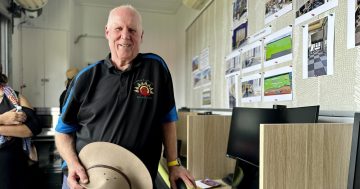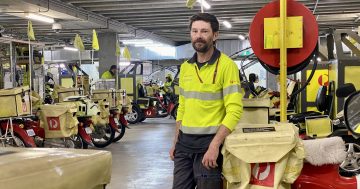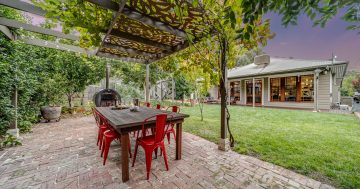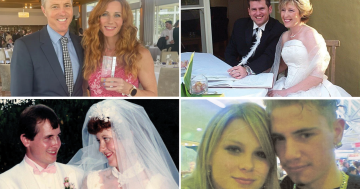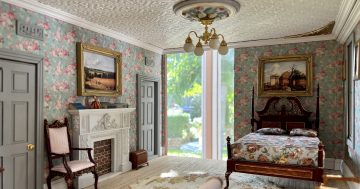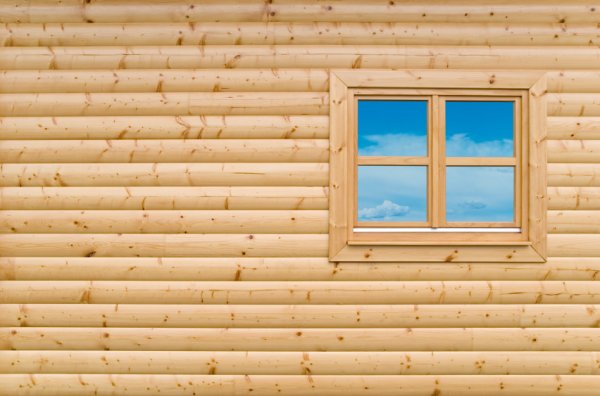
ABC Online reports that “In an effort to live a simpler life and avoid the large debt that comes from buying a home, Andrew Clapham is paring back and joining the tiny house movement”.
“He has begun to build a tiny house in his parent’s backyard in Canberra’s north, which he said would eventually look much like a log cabin”.
But wait, there’s more “The typical tiny house is built on a trailer… putting the maximum width at 2.5 metres”.
Hmmm “Tiny houses on trailers”… that strikes a chord.
That would be what the Americans call “Trailer Homes”.
Here in Australia we have “Caravans”.
This local angle is apparently not one Elise Pianegonda who reports this story for the national news bringer is aware of.
She has had to go to the US to track down where Andrew first gained inspiration for his novel idea.
Elise provides a useful link for readers to: Related Story: Downscaling to a tiny house to find big happiness
Here we learn about Dee Williams.
Following a health scare, Dee decided “The American Dream” – which included a thirty year mortgage – was all too much.
She decided to downsize and… “What Williams ended up with was a small, cedar-clad house the size of a parking spot. That’s meant that she has had to downsize her life and her number of possessions (which currently stands at 305). She’s also given up on a few creature comforts.”
“‘I don’t have running water, so I don’t have a shower unless you count me washing in a basin,’ says Williams, now author of The Big Tiny. ‘I shower at work or at the neighbour’s house or I shower at the gym. I don’t have a refrigerator, I use a cooler. I buy perishables in small quantities often. I don’t have a lap pool, I don’t have a billiard table, I probably couldn’t fit a keg of beer in through the front door. There’s lots that’s not in there.’”
Dee finishes up with a good old fashioned homily – basically Granny’s “count your blessings” revisited: ‘Ultimately, all that has helped me see that I’ve got plenty. I’ve got everything I need and I’m not really wanting. And when I do find myself kvetching because I don’t have a shower, for example, that’s a part of life.’
‘There’s a certain myth that we should be 100 per cent happy all the time, but in fact if we really believe that, we’re going to be pretty miserable at least some of the time because life isn’t meant to be perfectly comfortable. A good solid B average, 85 per cent happy, that’s a pretty good mark in life.’”
Of course Dee doesn’t go without showering – she just uses someone else’s.
Just as Andrew is using his parent’s property – the really expensive part of owning a home in Canberra – but dressing that up with a lot of claptrap about “sustainability” and how “he would love to see the tiny house movement gain a bigger following in Australia. ‘I’d like to see a lot more people living within their means and being happy about it,’ he said.”
Of course Andrew is living within his parent’s means just as Dee is reliant on others for hot showers, refrigeration, an area to entertain etc.
Dee doesn’t mention toilet facilities.
She does say she doesn’t have running water, so a flushing water closet is probably out of the question.
I noticed a group of trees in the background.
If she does go in the bushes that makes her even closer to nature than Andrew, who plans to build an outhouse.
An outdoor dunny – now there’s an idea.
Wonder if Elise who wrote the article has ever heard of those, or can we expect another piece on the newest breakthrough in Australian home planning?
Many years ago a close relative was living at Kiama with the love of his life in what we called “The Heidi House”.
It was even prettier than the one Dee built and had about the same level of amenities.
He was part of a group who had decided to forsake the city and go for the simple life.
My favourite throw it all away and live the simple life hippy was the ex-advertising man who had decided to build a stone cottage.
Fortunately the advertising business had paid well enough for him to buy his own front end loader and import the stone, but there he was: living the raw, back to nature existence.
I sympathise with Andrew and others like him who can’t get their own place.
The price of real estate is the problem, not the cost of the dwelling.
Perhaps Andrew and others like him should give some thought as to why that is the case in a country with so much land?












